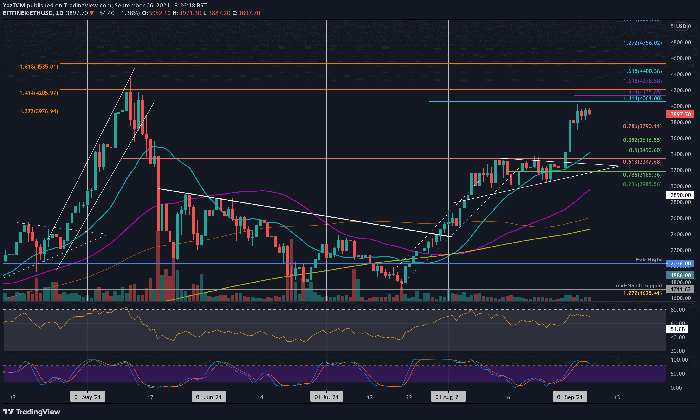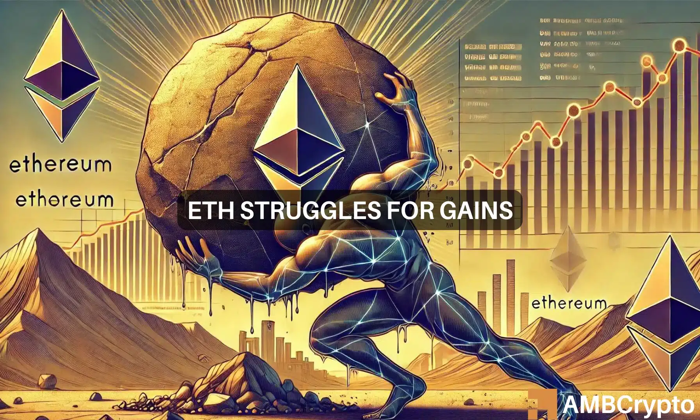The Open Intents Framework (OIF) is revolutionizing the way users engage with the Ethereum ecosystem by enhancing interoperability across various networks. Backed by prominent Layer 2 networks such as Arbitrum, Optimism, Scroll, and Polygon, OIF aims to simplify cross-chain transactions, allowing seamless asset transfers between different chains. Developed in collaboration with over 30 teams, this modular and open framework introduces ‘Intents’—user-defined goals that eliminate the complexities of traditional transactions. By standardizing critical components like solving and settlement, the Open Intents Framework fosters innovation while ensuring compatibility across diverse platforms. As the Ethereum community embraces this initiative, it sets the stage for a more connected and user-friendly blockchain experience.
The Ethereum Open Intents Framework is a pioneering initiative designed to streamline interactions within the blockchain network. With a focus on enhancing cross-chain capabilities, this framework promotes collaboration among various Layer 2 solutions, enabling smoother transactions across the Ethereum landscape. By setting a new standard through the integration of EIP 7683, developers can now leverage a cohesive system that simplifies user intents without the burden of intricate transaction details. This open-source approach not only empowers developers but also aligns with the broader goal of creating a robust and interconnected Ethereum ecosystem. As the framework evolves, it promises to drive innovation and enhance user experience across multiple chains.
Understanding the Open Intents Framework (OIF)
The Open Intents Framework (OIF) represents a significant advancement in the Ethereum ecosystem, aiming to streamline cross-chain transactions while enhancing interoperability. Developed collaboratively with a diverse array of contributors, including Layer 2 networks and infrastructure providers, the OIF seeks to simplify the user experience by allowing individuals to specify their desired transaction outcomes without grappling with intricate technical details. This modular approach not only fosters innovation across the Ethereum landscape but also ensures that various solutions can work together seamlessly.
Launched with the support of prominent players such as Arbitrum, Optimism, and Polygon, the OIF is positioned as a public good initiative designed to benefit the entire Ethereum community. This collaborative effort is underpinned by a commitment to creating standardized components that facilitate easier integration and adoption, making it an attractive option for developers. As the landscape of decentralized finance (DeFi) continues to evolve, the OIF is poised to play a crucial role in shaping the future of cross-chain interactions within the Ethereum ecosystem.
The Role of Layer 2 Networks in Ethereum’s Open Intents Framework
Layer 2 networks such as Arbitrum, Optimism, and Scroll have become instrumental in the success of the Open Intents Framework (OIF). These networks enhance Ethereum’s scalability and reduce transaction costs, making them ideal partners for implementing the OIF’s objectives. By leveraging Layer 2 solutions, the OIF can achieve its goal of simplifying cross-chain transactions, allowing users to move assets quickly and efficiently across different blockchain environments.
Moreover, the support from these Layer 2 networks highlights a growing trend towards interoperability in the Ethereum ecosystem. As developers work collaboratively on projects like the OIF, the potential for creating robust and efficient decentralized applications (dApps) increases significantly. This ecosystem synergy not only benefits individual projects but also elevates the entire Ethereum network, paving the way for a more interconnected and user-friendly blockchain experience.
Enhancing Cross-Chain Transactions with the OIF
At the heart of the Open Intents Framework is its focus on enhancing cross-chain transactions. This initiative addresses a critical pain point in the blockchain space: the complexity and inefficiency often associated with transferring assets across different chains. By introducing ‘Intents,’ the OIF allows users to articulate their transaction goals without needing to understand the underlying complexities, thereby democratizing access to blockchain technology.
As the OIF gains traction, it is likely to encourage broader adoption of cross-chain functionalities, enabling users to interact with multiple blockchain ecosystems effortlessly. This enhanced interoperability will not only make it easier for users to navigate the Ethereum ecosystem but also encourage more developers to create innovative solutions that leverage the benefits of cross-chain transactions. Ultimately, the OIF stands to revolutionize the way users engage with blockchain technology.
The Impact of EIP 7683 on the Ethereum Ecosystem
EIP 7683, co-authored by Uniswap Labs and integrated into the Open Intents Framework, plays a pivotal role in promoting cross-chain capabilities within the Ethereum ecosystem. This Ethereum Improvement Proposal introduces a new standard that enables developers to adopt a uniform approach to cross-chain intents, facilitating easier interoperability among various projects. By establishing a common framework, EIP 7683 aims to eliminate compatibility issues that have historically hindered the development of cohesive cross-chain solutions.
The significance of EIP 7683 cannot be overstated, as it lays the groundwork for a more interconnected Ethereum ecosystem. With the backing of major Layer 2 networks and the support of influential projects like Uniswap, this standard is set to enhance the user experience by making cross-chain interactions more efficient and intuitive. As adoption of EIP 7683 expands, it is expected to drive further innovation, ultimately benefiting the entire Ethereum community.
Collaboration within the Ethereum Community
The successful development of the Open Intents Framework (OIF) is a testament to the power of collaboration within the Ethereum community. With contributions from over 30 teams, including Layer 2 networks, wallets, and infrastructure providers, the OIF exemplifies the collective effort to create a more interoperable blockchain environment. This collaborative spirit is essential as it drives innovation and allows for diverse input that enhances the overall functionality of the Ethereum ecosystem.
As various stakeholders come together to support the OIF, the Ethereum community is fostering an environment where new ideas can flourish. This synergy not only accelerates the adoption of standards like EIP 7683 but also ensures that the solutions developed can cater to the needs of a broad range of users. Ultimately, the collaboration within the Ethereum ecosystem is key to unlocking the full potential of cross-chain transactions and enhancing user experiences across the blockchain landscape.
Challenges and Opportunities in Cross-Chain Transactions
Despite the promising advancements brought by the Open Intents Framework, challenges remain in the realm of cross-chain transactions. Compatibility issues, varying standards, and the complexity of integrating different protocols can hinder the seamless transfer of assets. The OIF aims to address these challenges by providing a standardized framework that allows developers to build solutions that can work across multiple chains without being tied to a single provider.
On the flip side, these challenges present significant opportunities for innovation within the Ethereum ecosystem. As developers work to create solutions that enhance cross-chain functionality, there is potential for the emergence of new dApps and tools that simplify the user experience. By focusing on collaboration and standardization, the Ethereum community can turn these challenges into pathways for growth, ultimately leading to a more robust and interconnected blockchain environment.
Future Developments within the Open Intents Framework
Looking ahead, the Open Intents Framework holds immense potential for future developments within the Ethereum ecosystem. As the initiative gains traction, additional features and enhancements are anticipated that will further streamline cross-chain transactions. The commitment to modularity and interoperability ensures that the OIF can evolve in response to the needs of its users and the broader blockchain community.
With ongoing support from major Layer 2 networks and contributions from various stakeholders, the future of the OIF is bright. The Ethereum Foundation has indicated plans for continued expansion and improvement, paving the way for a more cohesive and user-friendly blockchain experience. As the demand for cross-chain functionalities increases, the OIF is well-positioned to be at the forefront of this evolution.
The Importance of User-Centric Design in Blockchain Technology
User-centric design is increasingly recognized as a critical factor in the success of blockchain technology, particularly with initiatives like the Open Intents Framework. By prioritizing the user experience, developers can create solutions that not only meet technical requirements but also resonate with the needs and preferences of end-users. This approach is essential for fostering mass adoption of blockchain solutions, as it simplifies complex processes and makes technology more accessible.
In the context of the OIF, user-centric design is embodied in the concept of ‘Intents,’ which allows users to express their transaction goals without needing to understand the intricate details of blockchain interactions. This focus on user experience is a game-changer, as it encourages broader participation in the Ethereum ecosystem and enables users to engage with cross-chain transactions confidently. Ultimately, placing users at the center of blockchain development will be key to unlocking the technology’s full potential.
Key Takeaways from the Open Intents Framework Launch
The launch of the Open Intents Framework marks a pivotal moment for the Ethereum ecosystem, emphasizing the importance of collaboration and innovation. By bringing together a diverse group of contributors, the OIF sets a new standard for cross-chain transactions, aiming to simplify the user experience while enhancing interoperability. This initiative signifies a collective commitment to addressing the challenges faced by users in navigating the complex blockchain landscape.
As the Ethereum community continues to embrace the principles of the OIF, the potential for growth and development is immense. The backing of influential Layer 2 networks and the integration of standards like EIP 7683 are just the beginning. As more projects adopt this framework, users can expect a more seamless and interconnected experience, ultimately driving greater adoption of Ethereum’s capabilities and reinforcing its position as a leader in the blockchain space.
Frequently Asked Questions
What is the Open Intents Framework (OIF) in the Ethereum ecosystem?
The Open Intents Framework (OIF) is a modular and open framework developed by the Ethereum Foundation to enhance interoperability within the Ethereum ecosystem. It simplifies cross-chain transactions by allowing users to define their desired outcomes through ‘Intents’ without needing to manage complex transaction details.
How does the Open Intents Framework improve cross-chain transactions?
The Open Intents Framework improves cross-chain transactions by standardizing key components like solving and settlement, which facilitates smoother asset transfers across different chains. This modular approach allows developers to create customizable solutions that work across various platforms.
Which Layer 2 networks support the Open Intents Framework?
The Open Intents Framework is backed by several leading Layer 2 networks, including Arbitrum, Optimism, Scroll, and Polygon. These networks play a crucial role in promoting the framework’s adoption and enhancing interoperability within the Ethereum ecosystem.
What role do ‘Intents’ play in the Open Intents Framework?
‘Intents’ in the Open Intents Framework allow users to articulate their desired outcomes for transactions without delving into the complexity of transaction specifics. This user-friendly approach aims to simplify interactions across different chains and enhance the overall user experience.
What is EIP 7683 and how is it related to the Open Intents Framework?
EIP 7683 is a new standard for cross-chain intents co-authored by Uniswap Labs. It serves as a foundational component of the Open Intents Framework, promoting ecosystem-wide adoption and collaboration among various Ethereum projects.
Who funded the development of the Open Intents Framework?
The development of the Open Intents Framework was initially funded by Hyperlane, which aims to foster community ownership and funding for this public good initiative within the Ethereum ecosystem.
What are the benefits of the modular design of the Open Intents Framework?
The modular design of the Open Intents Framework promotes collective innovation by allowing developers to integrate and customize their solutions without being tied to a single provider. This flexibility enhances compatibility and encourages the development of diverse intent solutions.
How does the Open Intents Framework contribute to the future of Ethereum?
The Open Intents Framework contributes to the future of Ethereum by laying a robust foundation for interoperability, easing cross-chain transactions, and promoting collaboration among various stakeholders in the Ethereum ecosystem, including Layer 2 networks and decentralized applications.
What initiatives are expected from the Open Intents Framework in the future?
The Ethereum Foundation has indicated that further developments and expansions of the Open Intents Framework are anticipated, which may include new partnerships, enhancements to the framework, and increased adoption across the Ethereum ecosystem.
| Key Points | Details |
|---|---|
| Open Intents Framework (OIF) | A modular and open framework developed by the Ethereum Foundation to enhance interoperability within the Ethereum ecosystem. |
| Collaboration | Created in collaboration with over 30 teams including Layer 2 networks, wallets, and infrastructure providers. |
| Primary Goal | To simplify cross-chain transactions and enable easy asset transfers across different chains. |
| Intents Concept | Allows users to specify desired outcomes without dealing with complex transaction specifics, though compatibility has been an issue. |
| Modular Framework | Promotes innovation by standardizing essential components while allowing developers flexibility in integration. |
| Public Good Initiative | Spearheaded by contributors from various organizations, including Hyperlane and Bootnode, with funding aimed at community ownership. |
| Endorsements | Backed by prominent Layer 2 networks like Arbitrum, Optimism, Scroll, and Polygon. |
| Future Developments | Further developments and expansions are anticipated, indicating ongoing evolution of the framework. |
| Involvement of Uniswap Labs | Uniswap Labs co-authored ERC-7683 to promote ecosystem-wide adoption of cross-chain intents. |
Summary
The Open Intents Framework (OIF) is a significant development in the Ethereum ecosystem aimed at enhancing interoperability and simplifying cross-chain transactions. By establishing a standardized approach to intents and facilitating collaboration among multiple teams, the OIF paves the way for more seamless asset transfers and fosters innovation within the Ethereum community. With backing from leading Layer 2 networks and ongoing support from various contributors, the OIF represents a robust step towards a unified and efficient Ethereum landscape.
The Open Intents Framework (OIF) represents a significant leap forward in the Ethereum ecosystem, backed by prominent Layer 2 networks such as Arbitrum, Optimism, Scroll, and Polygon. This innovative framework is designed to enhance interoperability and simplify cross-chain transactions, allowing users to navigate the complexities of asset transfers across various chains with unprecedented ease. By utilizing “Intents,” users can express desired outcomes without the burden of intricate transaction details, effectively streamlining the process. Developed in collaboration with over 30 teams, the OIF addresses compatibility challenges that have historically hindered adoption, providing a standardized approach to solving and settlement. As Ethereum continues to evolve, the Open Intents Framework stands poised to facilitate a more cohesive and interconnected blockchain environment, promoting a future where seamless transactions are the norm.
The Ethereum Open Intents Framework (OIF) is a groundbreaking initiative aimed at fostering interoperability across various blockchain networks. This modular framework, supported by leading Layer 2 solutions, seeks to simplify the mechanics of cross-chain asset transfers, making it easier for users to achieve their transaction goals. With the introduction of “Intents,” users can now specify their desired outcomes without delving into the intricate details that often accompany blockchain transactions. The framework not only addresses existing compatibility issues but also encourages innovation by allowing developers the flexibility to customize their solutions. As a collaborative effort involving multiple stakeholders in the Ethereum ecosystem, the Open Intents Framework is set to redefine how users interact with decentralized networks, paving the way for a more unified blockchain experience.















